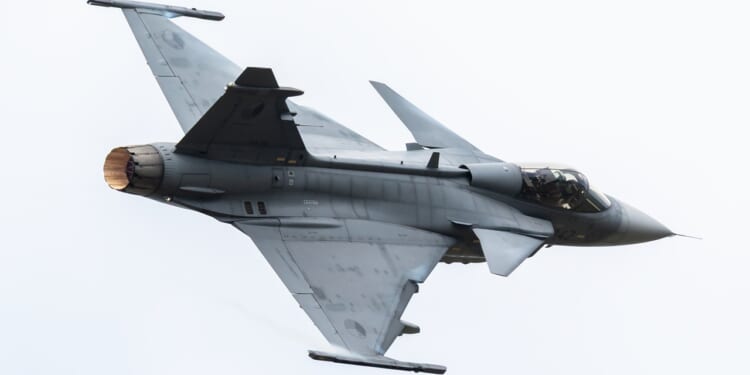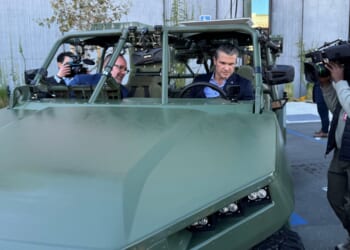Sweden had previously been a partner in the Team Tempest program with the UK and Italy—but later withdrew in order to pursue its own sixth-generation fighter program.
The Swedish Saab JAS 39 Gripen multirole fighter is regarded as one of the most capable non-stealth combat aircraft in service worldwide today. Although designed for operations in the Nordic region, the rugged fighter has proven to be highly versatile, leading to its adoption by Thailand, South Africa, and Brazil—with Colombia and Peru also reportedly edging closer to buying it.
Yet Stockholm has also acknowledged that the post-Cold War era fighter may be showing its age, and will not be able to hold its own against the sixth-generation manned fighters that will begin to enter service in the 2030s. This week, the Swedish Defence Materiel Administration (Försvarets Materielverk or FMV) extended its contract with Saab towards the development of the “Concept Program Future Air Combat System” (Konceptet Framtidens Stridsflyg, or KFS)—not to be confused with the similar “Future Combat Air System” (FCAS) program underway in Spain, France, and Germany.
KFS is the centerpiece of a partnership between the FMV, Saab, and GKN Aerospace, with the defense agency awarding a further SEK 2.6 billion ($274 million) for ongoing studies from now until 2027.
“The order includes conceptual studies of manned and unmanned solutions in a system-of-systems perspective, and technology development and demonstrators. Saab will continue to collaborate closely with FMV, the Swedish Armed Forces, the Swedish Defence Research Agency, GKN Aerospace, and other industry partners. The order is an extension and expansion of the original contract signed in March 2024,” Saab said in a media statement.
The KFS Fighter Will Be Loaded With Sixth-Gen Technology
Although the KFS is still in its developmental stage, the future aircraft is expected to be “optionally manned,” with the potential to be supported by unmanned aerial systems (UAS) that would serve as loyal wingmen. In addition, the multirole fighter will feature advanced stealth and artificial intelligence (AI) capabilities. It will build on Sweden’s experience developing the JAS 39 Gripen and is designed to operate in high-threat environments.
Development of the KFS began in March 2024.
Saab and GKN have spent the last 19 months conducting studies on the required technologies, developing the aircraft’s future capabilities, and preparing for future flight demonstrators as part of the Phase 1 efforts.
The subsequent Phase 2 will focus on the development of the technology and demonstrators, potentially extending through to 2030, with further development in the early 2030s.
The flying demonstrator will serve as a prototype to verify the new technologies in flight. The new contract award will enable the program to reach that milestone.
“This extension ensures continuity in the development work and is an important part of developing and verifying technology that can form the basis for future decisions about Swedish combat aviation capabilities,” said Carl-Fredrik Edström, head of the aerospace equipment division at FMV. “Given the long development cycles in the combat aviation field, it is important that we already build knowledge, test technology and prepare future paths.”
Sweden Wants an Independent Fighter Program
Sweden had previously been a partner in the Team Tempest program with the UK and Italy. However, Stockholm opted not to remain with the effort as it evolved into the UK-led “Global Combat Air Programme” (GCAP), which merged with Japan’s F-X program in 2022.
“Stockholm has pursued an independent evaluation of its strategic needs, shaped by the war in Ukraine, NATO membership, and increased defense spending,” the aviation news outlet AeroTime reported.
In addition to supporting the KFS program, FMV has also contracted Saab to provide additional manufacturing equipment for the JAS 39 Gripen E, the modernized version of the Swedish fighter.
About the Author: Peter Suciu
Peter Suciu has contributed over 3,200 published pieces to more than four dozen magazines and websites over a 30-year career in journalism. He regularly writes about military hardware, firearms history, cybersecurity, politics, and international affairs. Peter is also a contributing writer for Forbes and Clearance Jobs. He is based in Michigan. You can follow him on Twitter: @PeterSuciu. You can email the author: [email protected].
Image: Shutterstock / Soos Jozsef.


















